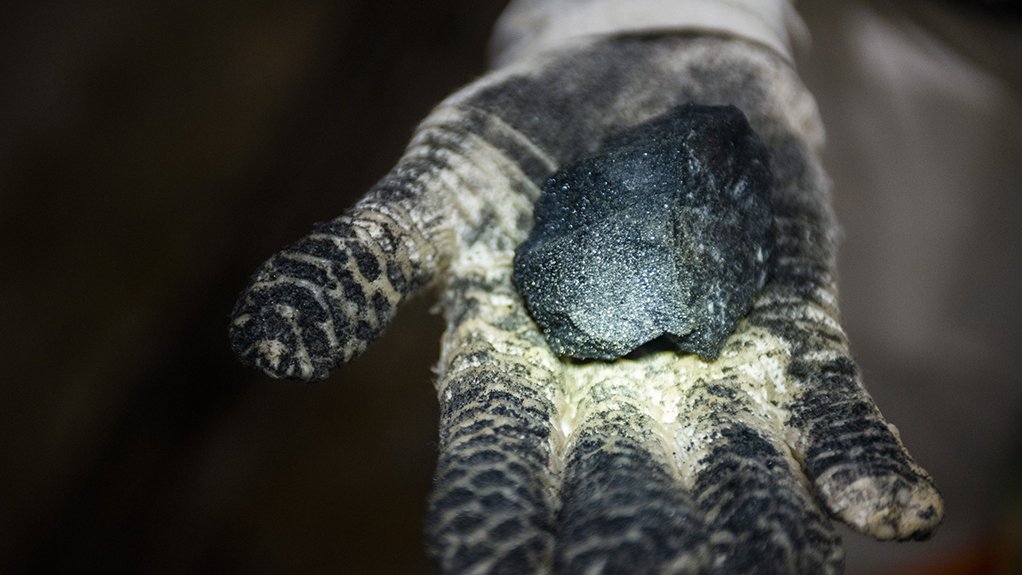Automotive experts unpack NEV growth projections, impact on platinum demand
As new energy vehicle (NEV) sales grow more moderately in reality than what was expected two years ago, demand for platinum group metals (PGMs) in the automotive sector is not trailing off as drastically as may have been expected, a panel of speakers noted during a PGMs Industry Day event hosted, in Johannesburg, on April 10.
Circular materials technology company Umicore precious metals management senior VP Bernhard Fuchs said many people believed internal combustion engine (ICE) vehicles would be on the way out by now, but it turned out that the growth of NEVs had been more gradual, with the majority of vehicles on the road remaining ICE-propelled.
He said every region would find its optimal solutions and mix of technologies between battery electric vehicles (BEVs), fuel cell electric vehicles (FCEVs) and other NEVs, with a more realistic landing for pure BEVs being experienced at the moment than expected.
There are, however, select countries, such as China, that are seeing rapid BEV adoption rates, while European legislation is putting increasing pressure on manufacturers to move away from ICE vehicles.
Fuchs highlighted that, currently, FCEV technology was a superior transition technology for heavy trucks, which required more PGMs per unit produced than passenger vehicles; however, a very high number of passenger FCEVs would need to be produced to maintain the status quo for PGMs.
He added that China would increasingly import less PGMs as catalysts were recycled at the end of an asset life.
Toyota South Africa Motors new energy business development senior manager Anton Smalberger said that, although Toyota favoured FCEV technology at the moment, it advocated for a multi-pathway approach to decarbonisation.
He explained that the type of technology deployed in a vehicle depended on the vehicle suitability, including load and transport distance, as well as renewable energy availability.
Smalberger echoed Fuchs’ sentiment that commercial vehicles with higher loads functioned more efficiently with fuel cell technology, as the payload of a typically heavy truck would reduce by as much as 20% owing to the weight of a battery.
A BEV truck is also about 60% more expensive to operate than an ICE truck at the moment, while FCEV trucks are twice as expensive to operate compared with ICE-propelled trucks. There are, however, other total cost of ownership (TCO) benefits to consider.
Besides, Smalberger said, pricing for FCEV and BEV drivetrains alike were coming down on the back of improving economies of scale and technological advancement globally.
Smalberger said price parity between FCEV and ICE trucks was likely to be reached in 2027, depending on energy availability.
In terms of where PGMs demand could grow stronger, Smalberger said Europe would soon become a net importer of energy, which is a strong business case for FCEVs. The same goes for Japan and South Korea.
Toyota currently produces 30 000 fuel cells a year at its factory in Japan; however, if that could increase to 100 000 fuel cells a year, it could significantly lower the TCO of a vehicle.
Smalberger noted that FCEV and BEV technology viability was a “volume game” – the more interest emerges in any market, the more the price of the technologies can be reduced.
Cheaper FCEVs require decentralised production of hydrogen, which needs careful planning. In this regard, Smalberger urged more PGM producers to participate in investing in green hydrogen infrastructure to grow demand.
Smalberger also agreed with Fuchs that all technologies were necessary to realise a decarbonised future, and the mix would depend on affordability and other viability factors in each market across the world.
Volkswagen Group South Africa product and volume planning head Gina Handle said Volkswagen had produced many BEV models globally, with this strong commitment being poised to continue.
However, she noted that South Africa’s demand for NEVs would remain insufficient in the short term, owing to affordability concerns. Handle said customer spend was constrained owing to high inflation and interest rates, which hampers the volume needed to justify more of these NEV investments.
She said ICE vehicles would remain dominant into the mid-2030s in South Africa, and, only once the cost of NEVs came down significantly, would manufacturers see more demand from consumers.
This bodes well for platinum demand in terms of the catalytic converters used in ICE vehicles.
To grow BEV and FCEV vehicle production, Volkswagen looks to the frontier markets that can support the manufacturing base, Handle confirmed. In the meantime, automotive manufacturers continued to innovate to reduce emissions and gradually introduce new technologies in line with market demand.
PwC Africa energy, utilities and resources leader Andries Rossouw concluded that there was a need for all technologies, including ICE vehicles in the foreseeable future. He said demand for PGMs would remain strong, albeit at flatter rates in future to account for the impact of recycling and BEV adoption in large markets.
Article Enquiry
Email Article
Save Article
Feedback
To advertise email advertising@creamermedia.co.za or click here
Press Office
Announcements
What's On
Subscribe to improve your user experience...
Option 1 (equivalent of R125 a month):
Receive a weekly copy of Creamer Media's Engineering News & Mining Weekly magazine
(print copy for those in South Africa and e-magazine for those outside of South Africa)
Receive daily email newsletters
Access to full search results
Access archive of magazine back copies
Access to Projects in Progress
Access to ONE Research Report of your choice in PDF format
Option 2 (equivalent of R375 a month):
All benefits from Option 1
PLUS
Access to Creamer Media's Research Channel Africa for ALL Research Reports, in PDF format, on various industrial and mining sectors
including Electricity; Water; Energy Transition; Hydrogen; Roads, Rail and Ports; Coal; Gold; Platinum; Battery Metals; etc.
Already a subscriber?
Forgotten your password?
Receive weekly copy of Creamer Media's Engineering News & Mining Weekly magazine (print copy for those in South Africa and e-magazine for those outside of South Africa)
➕
Recieve daily email newsletters
➕
Access to full search results
➕
Access archive of magazine back copies
➕
Access to Projects in Progress
➕
Access to ONE Research Report of your choice in PDF format
RESEARCH CHANNEL AFRICA
R4500 (equivalent of R375 a month)
SUBSCRIBEAll benefits from Option 1
➕
Access to Creamer Media's Research Channel Africa for ALL Research Reports on various industrial and mining sectors, in PDF format, including on:
Electricity
➕
Water
➕
Energy Transition
➕
Hydrogen
➕
Roads, Rail and Ports
➕
Coal
➕
Gold
➕
Platinum
➕
Battery Metals
➕
etc.
Receive all benefits from Option 1 or Option 2 delivered to numerous people at your company
➕
Multiple User names and Passwords for simultaneous log-ins
➕
Intranet integration access to all in your organisation





















